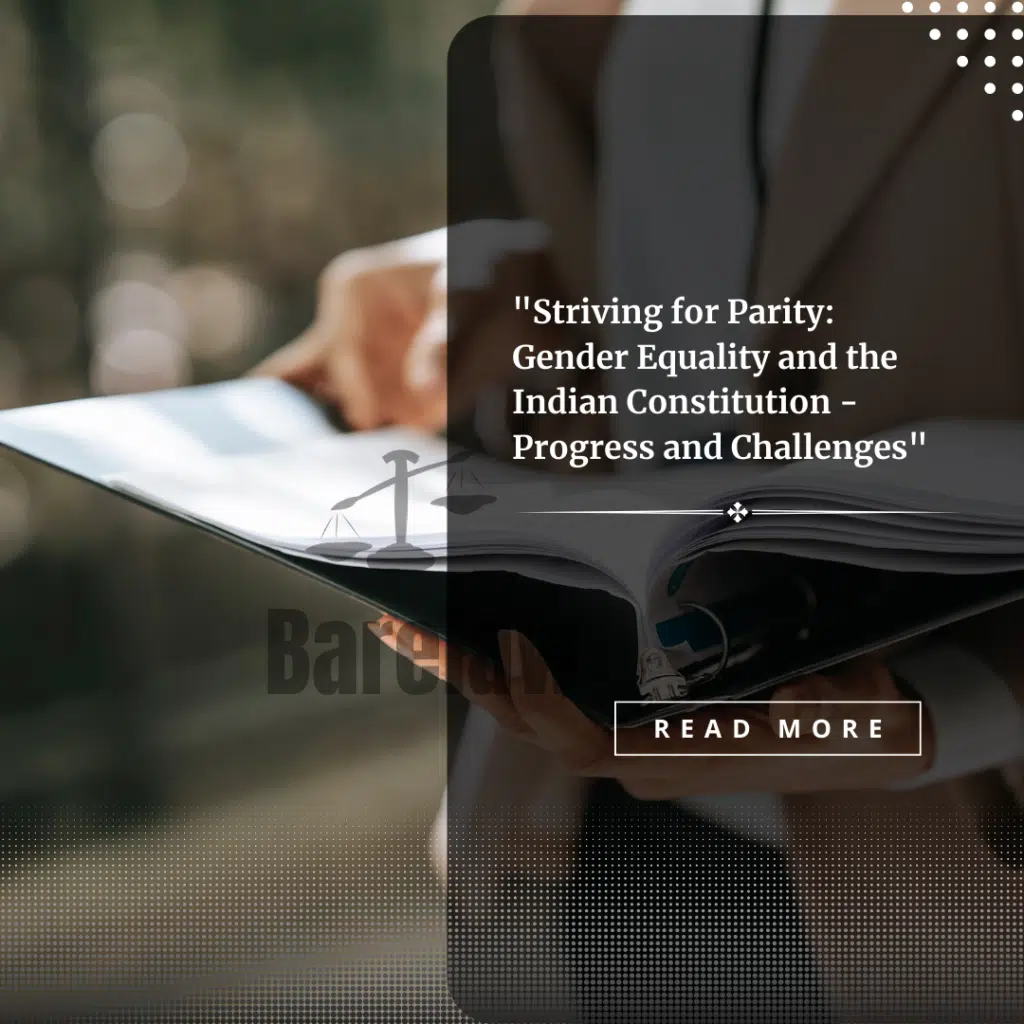
Table of Contents
Striving for Parity: Gender Equality and the Indian Constitution – Progress and Challenges
Striving for Parity: Gender Equality and the Indian Constitution – Progress and Challenges
Introduction
Gender equality is a fundamental principle enshrined in the Indian Constitution, reflecting the nation’s commitment to ensuring equal rights and opportunities for all individuals, irrespective of their gender. Over the years, the Indian Constitution has witnessed significant advancements in promoting gender equality, with provisions aimed at eliminating gender-based discrimination and empowering women. However, challenges persist in achieving true parity. This article explores the progress and challenges related to gender equality within the Indian Constitution, examining the constitutional provisions, analyzing the advancements made, and discussing the persisting challenges. By shedding light on the significance of gender equality and the need for continued efforts, this article aims to contribute to the ongoing dialogue on achieving true gender parity in India.
Constitutional Provisions
The Indian Constitution lays a strong foundation for gender equality through various provisions. Article 14 guarantees equality before the law and equal protection of the law for all individuals. Article 15 prohibits discrimination on the grounds of sex, ensuring equal treatment and opportunities for men and women. Article 16 provides for equal employment opportunities in the public sector, promoting gender equality in the workforce.
Moreover, the Constitution recognizes the importance of empowering women and ensuring their participation in decision-making processes. Article 39(a) directs the state to secure gender equality and Article 42 mandates just and humane conditions of work and maternity relief for women. Article 243D and 243T establish reserved seats for women in local government bodies, aiming to enhance women’s political representation.
Progress and Advancements:
The Indian Constitution has witnessed significant progress in advancing gender equality. Over the years, legislative reforms have been enacted to address discriminatory practices and promote gender justice. The Protection of Women from Domestic Violence Act, the Sexual Harassment of Women at Workplace (Prevention, Prohibition, and Redressal) Act, and the Maternity Benefit (Amendment) Act are examples of legal measures aimed at protecting women’s rights and addressing gender-based violence and discrimination.
Women’s political representation has also improved, with the reservation of seats for women in local government bodies. The Panchayati Raj Institutions and Urban Local Bodies have seen increased women’s participation, empowering women at the grassroots level and providing them with a platform to voice their concerns and shape policies.
Education has been a crucial area of progress in promoting gender equality. The Right to Education Act ensures free and compulsory education for all children, without discrimination based on gender. This has contributed to increasing girls’ enrollment rates and promoting gender parity in education.
Challenges and Persisting Inequalities:
Despite the progress made, challenges persist in achieving true gender parity in India. Gender-based discrimination and violence against women continue to be significant issues. Women face barriers in accessing justice, with challenges such as low conviction rates for crimes against women and the prevalence of societal attitudes that perpetuate gender inequality.
Economic disparities and limited access to resources pose challenges for women’s empowerment. Gender wage gaps, limited economic opportunities, and restricted access to financial resources hinder women’s economic independence and perpetuate gender-based inequalities.
Societal attitudes and cultural norms also contribute to gender inequalities. Deep-rooted patriarchal practices, stereotypes, and biases undermine women’s rights and restrict their full participation in various spheres of life. Social and cultural changes are necessary to challenge these norms and foster a more inclusive and egalitarian society.
Additionally, women from marginalized communities face intersecting forms of discrimination, further exacerbating their vulnerabilities. Dalit women, tribal women, and women from other marginalized backgrounds often experience multiple layers of discrimination and struggle for equal rights and opportunities.
The Way Forward:
Addressing the challenges and achieving true gender parity requires a multi-faceted approach. Legislative reforms must be complemented by efforts to change societal attitudes and norms. Education and awareness campaigns are crucial to challenging gender stereotypes, promoting gender sensitivity, and fostering a culture of respect and equality.
Empowering women economically is also pivotal. Enhancing access to education, skill development programs, and entrepreneurial opportunities can create pathways for women’s economic empowerment and reduce economic disparities.
Legal frameworks need to be effectively implemented and enforced to protect women’s rights and ensure swift justice. Strengthening institutions responsible for women’s welfare, such as the National Commission for Women, and enhancing support systems for survivors of gender-based violence are essential steps in this direction.
Moreover, engaging men and boys as allies in the fight for gender equality is crucial. Promoting gender-sensitive education, engaging men in discussions on gender equality, and encouraging positive male role models can contribute to transforming societal attitudes and dismantling patriarchal norms.
Conclusion:
Gender equality is a fundamental principle embedded in the Indian Constitution, and significant progress has been made in advancing gender equality and women’s empowerment. However, challenges persist, requiring sustained efforts to address deep-rooted gender disparities, discrimination, and violence. Achieving true gender parity necessitates a comprehensive approach that encompasses legislative reforms, societal transformation, and economic empowerment. By continuously working towards the vision of gender equality, India can foster an inclusive and egalitarian society where all individuals have equal rights, opportunities, and dignity.



